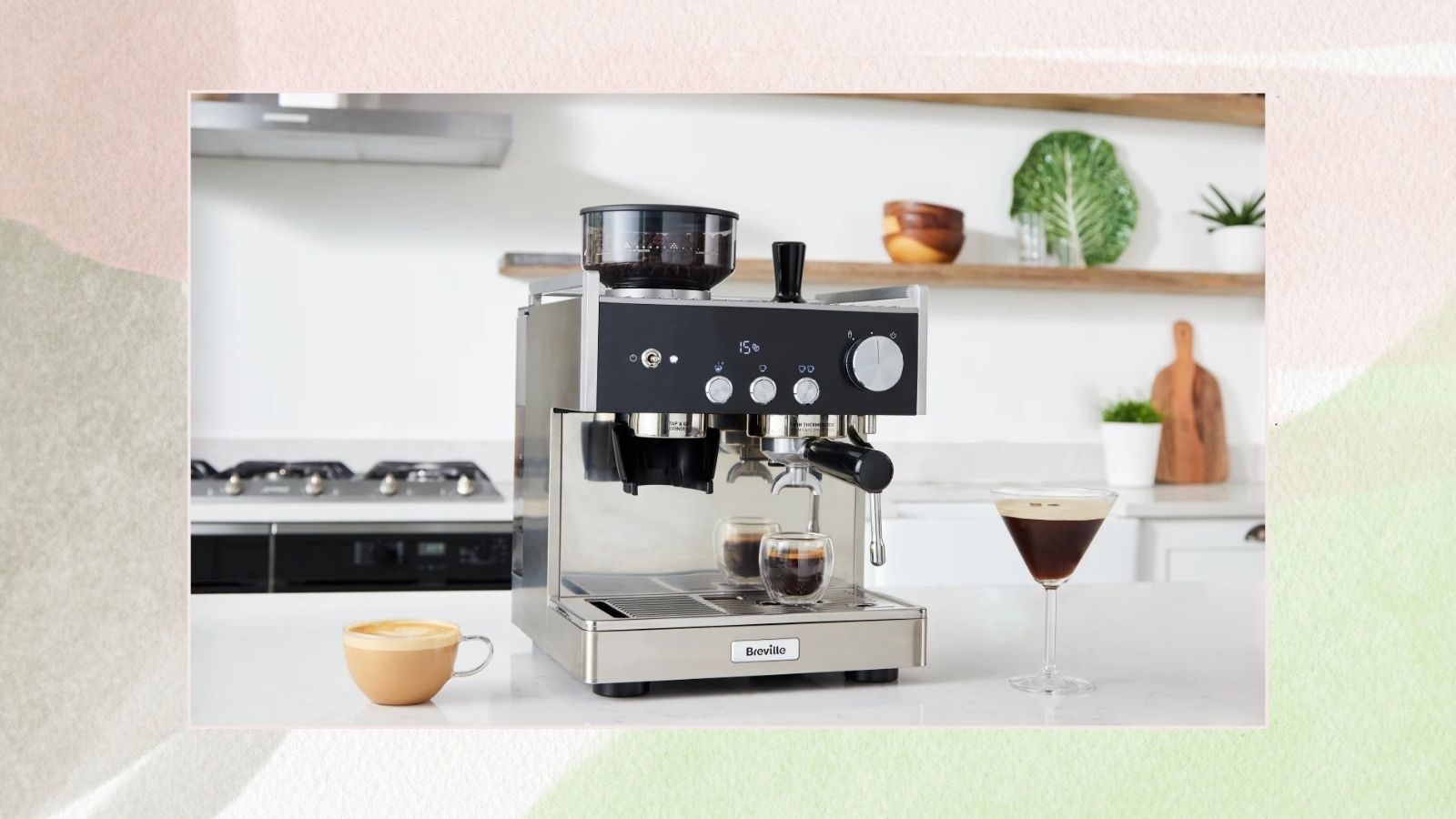
The Breville Barista Signature is the brand's latest and most advanced coffee machine, featuring a dual heating system and elevated, angular design that would fit perfectly into a modern kitchen.
Among the likes of Sage, De'Longhi and Jura, Breville might not be the brand that comes to mind when you think of the best coffee machine money can buy. After all, their coffee machines start at a very reasonable £50, and this is only their third bean-to-cup coffee machine. However, as a coffee machine expert, I have tested a number of Breville's machines and really enjoyed them, so I was optimistic when testing the Breville Barista Signature in my own kitchen for a few weeks.
The verdict? In short, this is a lot of machine for £500. While it's undeniably a lot of money, you'll often see bean-to-cup models for thousands of pounds, making this an entry-priced bean-to-cup that packs a punch in quality brewing and user experience. This machine needs breaking in a little, which is something I did very quickly in my highly caffeinated house, but once it's in its stride you'll wonder how you ever lived without it.
Breville Barista Signature specifications
- RRP: £499
- Dimensions: 415 x 31 x 33 mm
- Pressure: 15-bar
- Water tank capacity: 1.8 litres
- Bean hopper capacity: 250 g
- Weight: 11.2 kg
My first impressions of the Breville Barista Signature
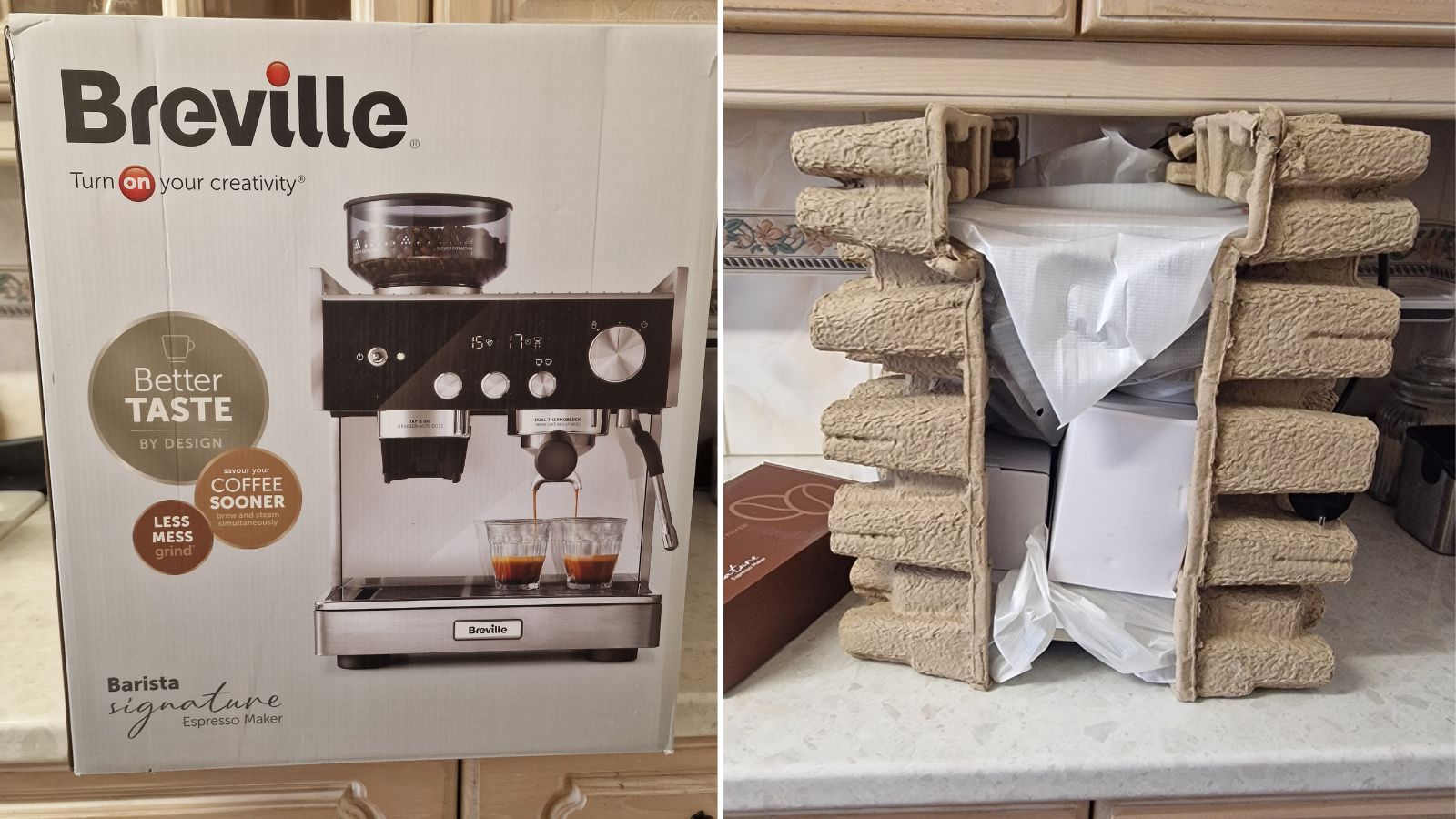
Getting the Breville Barista Signature out of the box was a struggle. This is a hefty machine, so I had to get my partner to help me lift it out of the box. Once it was out though, I could forgive it the weighty construction, because this machine is made almost entirely out of stainless steel, and it looks and feels high-quality.
There is a little assembly needed. You need to fit the water filter into place, as well as twisting the bean hopper onto the top of the machine. There is a drawer in the waste water container that holds pre-supplied cleaning essentials to keep this machine running well. Aside from that, you're supplied with a jug for steaming milk, a tamper which magnetically sits at the back right of the top of the machine, and a portafilter with a single and dual-basket filter to choose from.
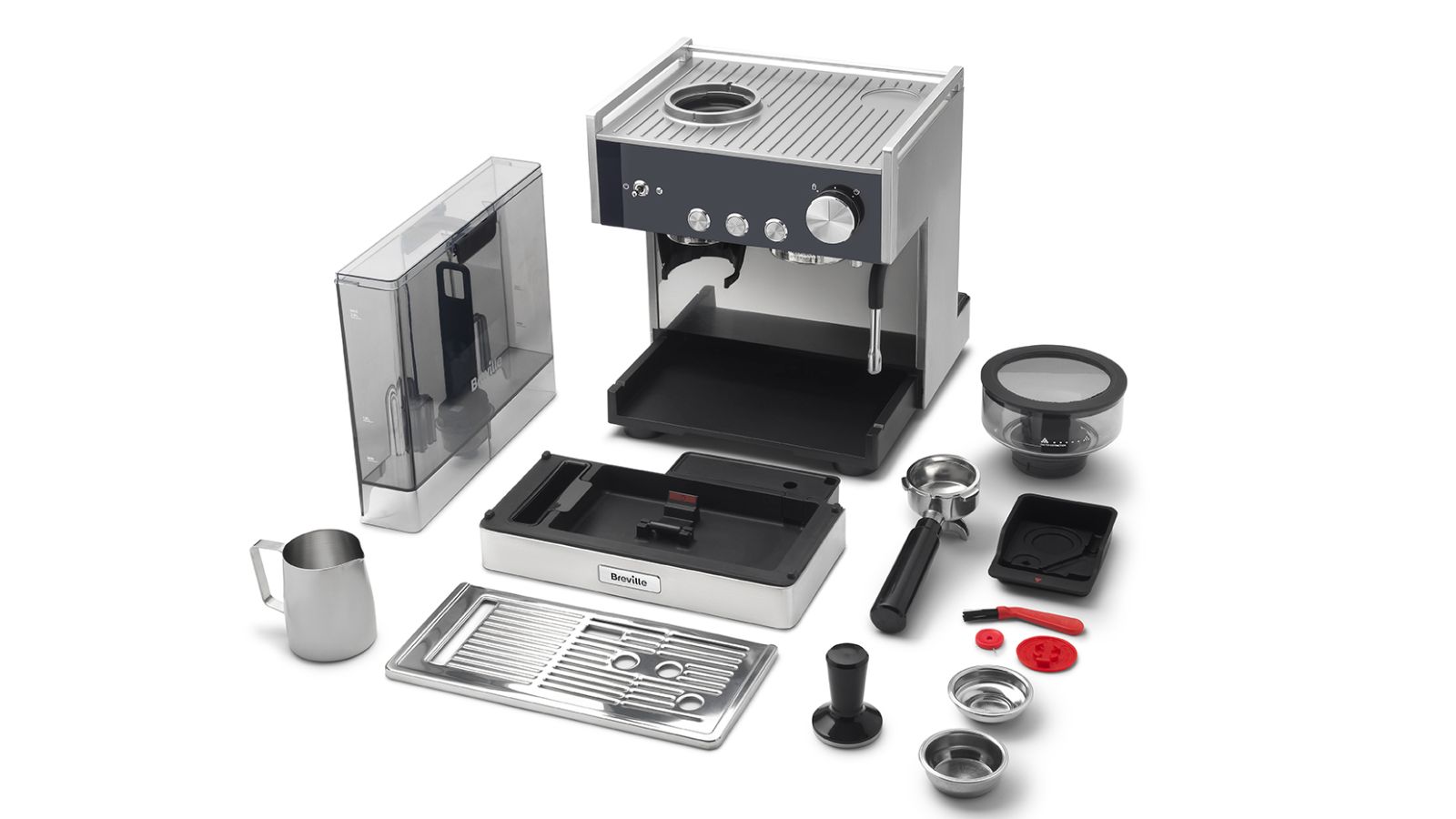
Most espresso machines I've tried come with a dual-wall and single-wall option for both filter size, so I was surprised to only find one in each. However, because you'll likely be using the grounds from this machine, it makes sense to leave out the dual-wall baskets, which are designed to work best with pre-ground coffee.
How does the Philips 5400 perform?
Once my coffee machine had set up, I chose the single shot basket to make an espresso. The Breville Barista Signature auto-doses, but you can manually change your ground size by twisting the bean container, as shown by the markings at the top. To start grinding, you push your portafilter into the holder and then press down to activate the pre-set. This was nice and quiet, and I enjoyed the addition of a light which shines on the filter as your beans are ground.
I then tamped my grounds firmly into place using the weighty tamper included with the machine. By contraist, the plastic handle of the portafilter feels a little on the flimsy side, which threw me off somewhat when handling what otherwise felt like a very sturdy machine. When inserting my portafilter into the group head, I had to really push the handle into place. Once this was done, it sat securely, and after a ew weeks of using this machine every day I found that it got a bit easier to put the filter into place and to remove it.
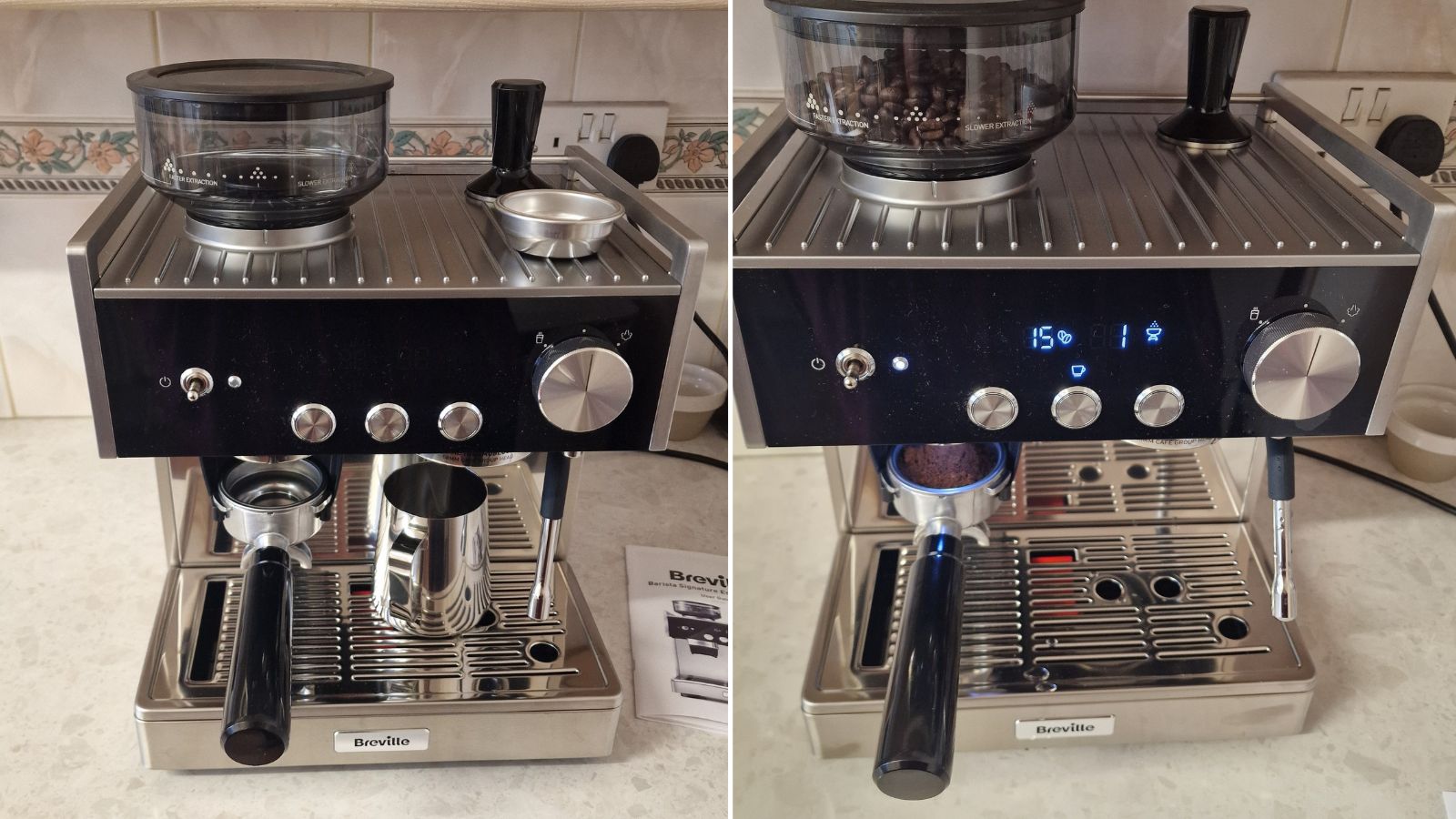
I'd opted for the medium grinding setting for my first shot. There are 15 in total, and depending on the quality of this first shot I was then able to make my grounds finer or larger to suit the specific beans I had chosen.
There was actually no need to do this though, because the first shot I pulled in this machine was really good. Strands of crema poured into my shot glass after a few seconds of infusion, and while there was some audible rattling from the drip tray, the machine itself brewed very quietly.
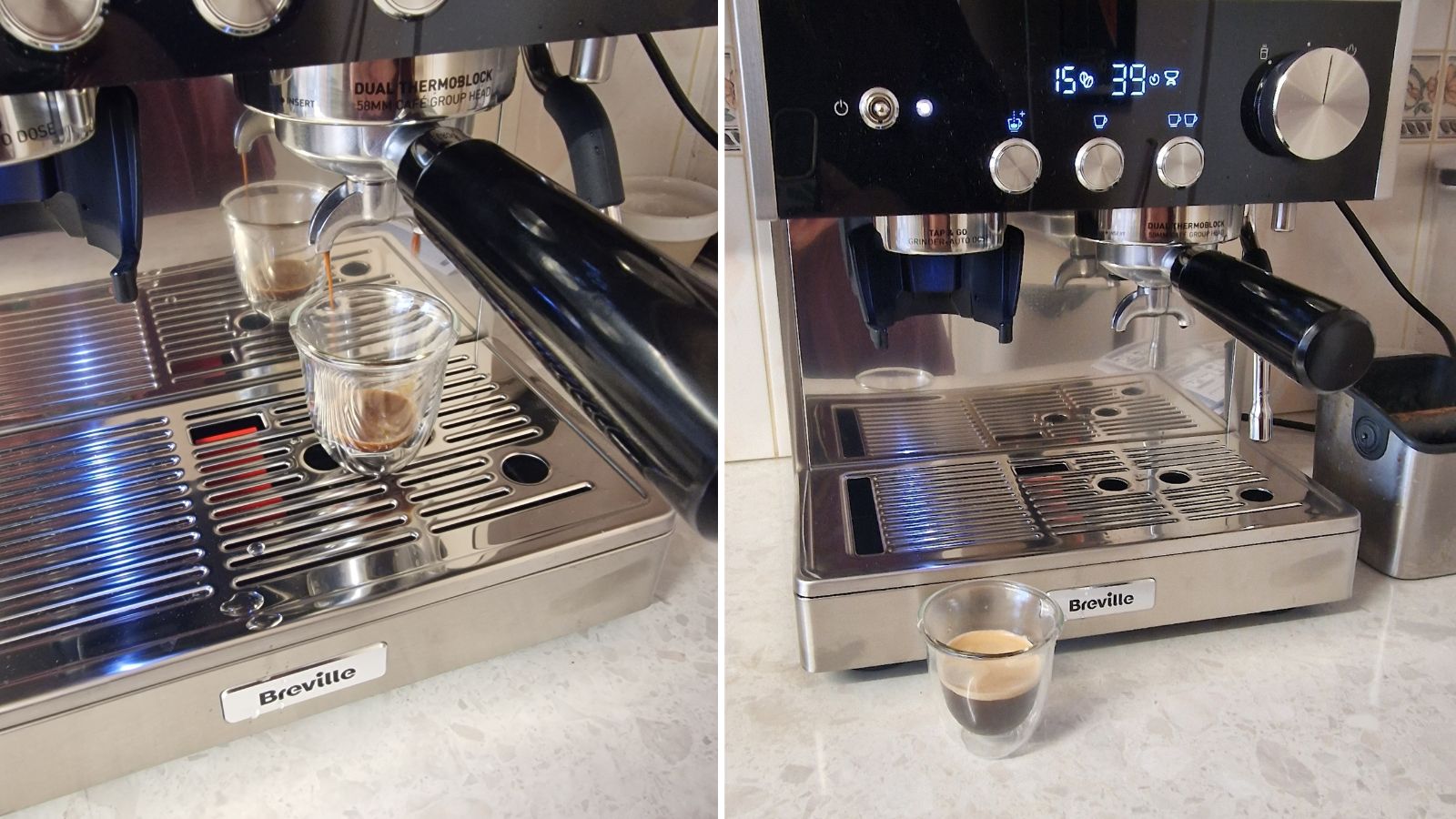
My finished shot had a firm and creamy top layer, and settled into a nice, rich dark brown colour. Taste-wise, it was robust but not bitter, and I enjoyed that the smart display on the machine had walked me through the whole process.
When emptying out my portafilter I was a bit troubled by the muddy layer of water that sat on top of my puck when I removed it from the group head. Usually, this would be pretty dry having just pulled a shot, so this muddiness was an indication that I needed to tamp my grounds a lot harder, or that I'd used too fine a grind setting which stopped the water from fully passing through my puck. I did enjoy that the instruction manual came with a very thorough troubleshooting guide which helped me figure out what the problem was, and once I'd increased the grind size slightly my pucks came out dry.
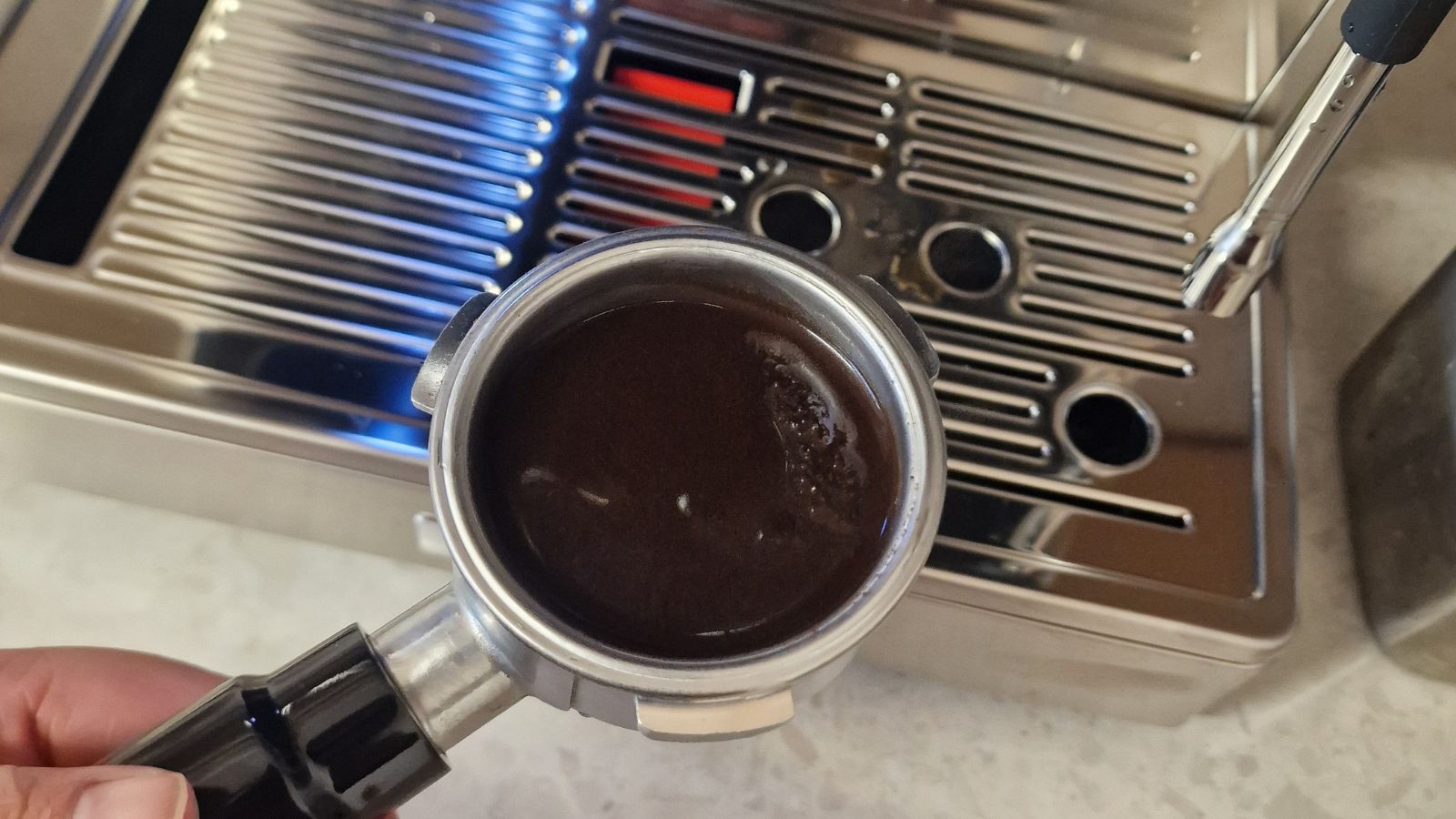
Next, I turned my attention to the steam wand. I really enjoyed the front dial that controls both the steam wand and the hot water which can be used to top up espresso for an americano. You turn it to the right for steam and to the left for water, and it also makes it easy to know what exact setting you're choosing as opposed to some coffee machines which place this dial out of sight on the side.
I flushed out my steam wand, which only took a couple of seconds, and then pulled it towards me to hit the edge of my jug at an angle. This creates a vortex which steams milk and creates consistent micro-foam throughout. I found that my milk took close to 40 seconds to hit the temperature I was looking for. When steaming milk, you should stop when the jug is too hot to touch for more than a couple of seconds, and this is an indication that the milk is at risk of burning.
One major perk of this coffee machine is that it's a dual-boiler design, which means the brewing unit and steam unit can be used simultaneously. This means you can steam your milk while the machine brews your coffee - a feature you usually won't find on a machine this price because it's a lot more expensive to build.
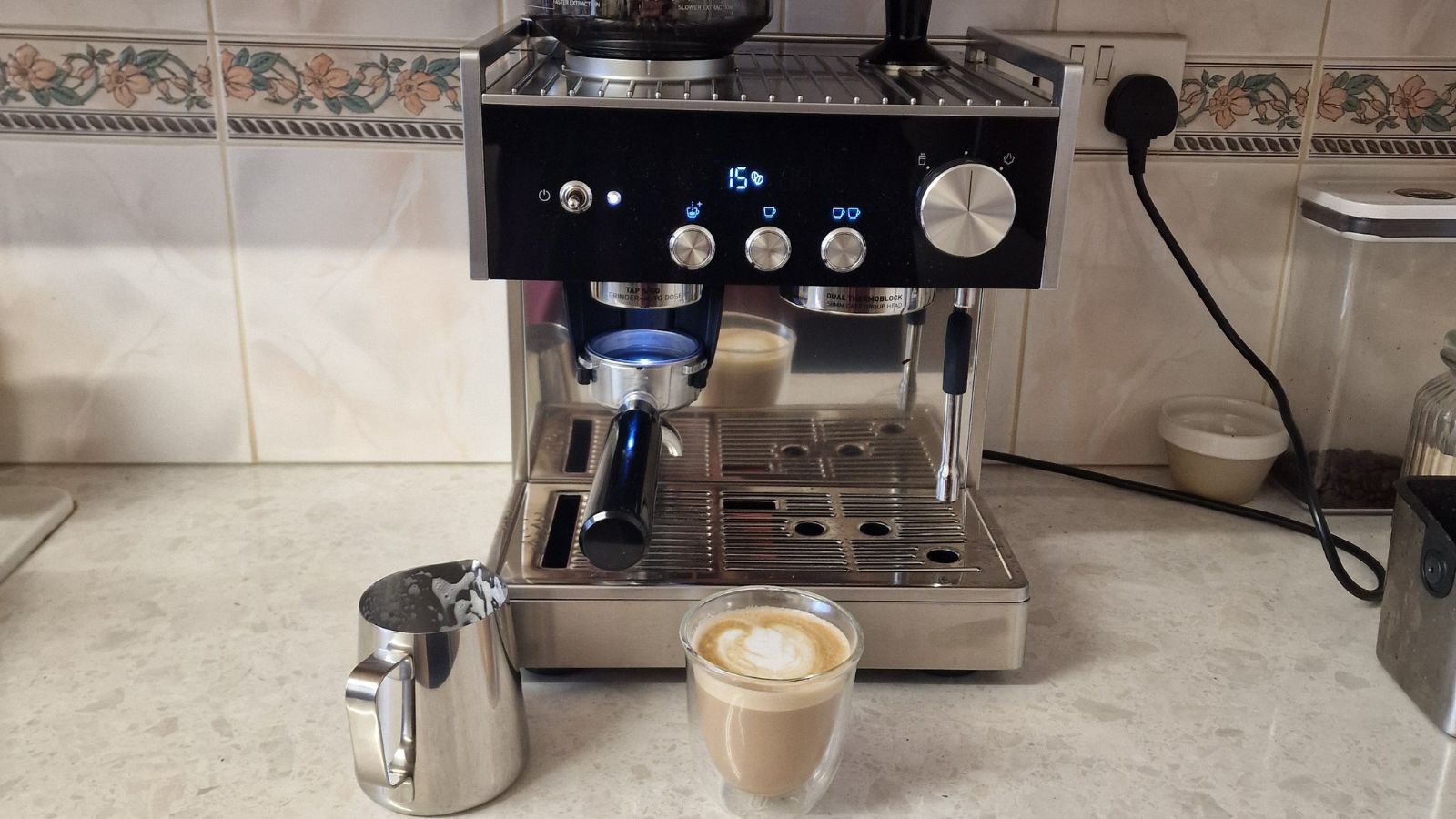
This is beginner-friendly steam wand. It's not too powerful that you won't have time to master texturising your milk, but it's still strong enough that you can get your desired result. I was happy with the lasting power of my finished foam, a sign that I had steamed more than just the top layer of milk. My only complaint is that I'd have liked a little more flexibility on the steam wand. As a left-handed person, it can be trickier for me to get the angle I want from my jug if the wand doesn't extend quite far to the side, but this was still manageable in the Breville Barista Signature.
How does the Breville Barista Signature compare?
We've reviewed the Breville Barista Max+ at woman&home before. It's the level down from the Barista Signature price-wise, although it won't cost much less, and it also has a slightly curvier and more retro-style build that may be a better fit for your kitchen. In terms of build though, the Barista Signature is a big step up in quality. Gone are the plastic finishes of the Barista Max+, and the digital display is notably more elevated.
If the idea of grinding and tamping your own beans and then steaming your own milk is a bit much, the Philips 5400 could also be a good alternative. It works at the touch of a button and does all the brewing and steaming for you. All you need to do is choose your desired drink
Should you buy the Breville Barista Signature?
If you've got £500 to spend, the Breville Barista Signature is a good choice. It fell short in a couple of areas - the plastic portafilter, for one, should really feel as premium as the rest of the machine, and that initial stiffness when putting the filter into the group head also makes the process feel less smooth and even moved my machine a few times while I was testing.
With that being said, the Breville Barista Signature is good at what matters - making quality coffee. It grinds sensitively, and surprisingly quietly, and from first brew I was really impressed with the espresso I made with this machine. The milk steamer is also a great feature with a beginner-friendly design that would make this a brilliant step if you're looking for your first 'proper' coffee machine.
About this review, and the reviewer
Millie Fender is Head of Shopping at woman&home, and has been reviewing coffee machines for five years. As part of her coffee expertise she's been to the London Coffee Festival, and even to the De'Longhi factory in Italy to see coffee machines being made.
Millie tested the Breville Barista Signature Espresso Machine in her own kitchen for a number of weeks where she and her partner used it at least six times a day while working from home.







